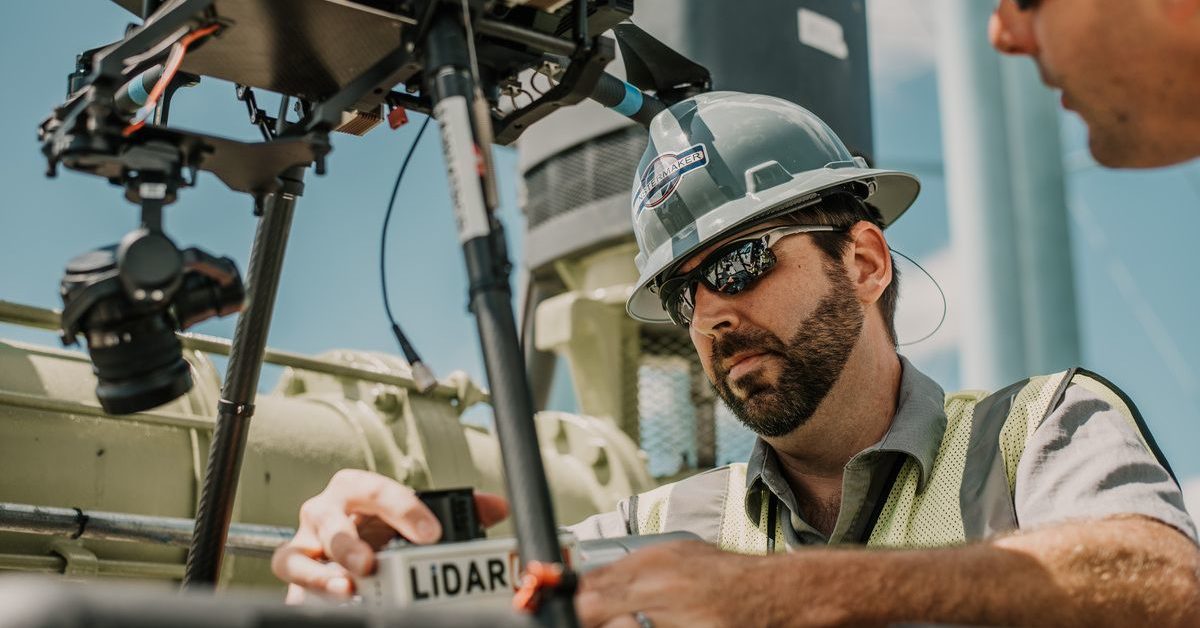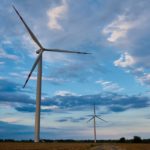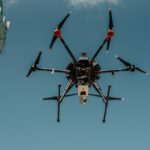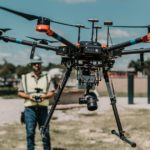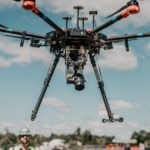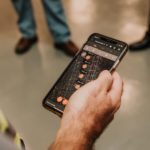Inspections of cell phone towers are a necessity due to the aging infrastructure being in need of constant repair. Proper inspections of these cell towers help to catch potential problems before service is disrupted and ensure that the towers are safe. These inspections are also mandated by the Federal Communications Commission (FCC).
Cell tower inspections have historically been performed by inspectors traveling from tower to tower, by climbing hundreds of feet into the air and visually inspecting them. This can be dangerous not only because of the high-altitude climbing, but also because of the close contact with radiofrequency radiation given off by the towers.
These inspections are problematic because of the dangers to the inspectors, and they’re also expensive and time-consuming. Along with large costs and risks associated with manual inspections, they also provide potentially incorrect data about the towers since they’re subject to human error.
Unmanned aerial vehicles (UAVs), more commonly known as drones, have completely changed how cell tower inspections are performed. This article will examine how drones are used for these inspections, including the requirements for performing cell tower drone inspections, what data is collected, and the benefits and costs associated with performing these inspections using a drone.
What are Cell Phone Tower Drone Inspection Requirements?
Safely flying a drone around a large cell phone tower requires the right hardware and software, an experienced and licensed remote pilot, and a working understanding of airspace rules as they pertain to UAVs. Let’s take a look at each of these requirements.
Hardware
When a drone is being used to perform a cell tower inspection, it could be flying as high as 1,000 feet in the air. This requires the drone to be strong enough to withstand the high winds it might encounter. If it isn’t stable enough it could affect the results of the data, or worse, hit the tower and cause damage to either the drone or the cell tower.
A drone that is flying at these heights will also require the necessary battery life for the flight. It can take a significant amount of time when you consider the ascent, data collection, and descent, depending on the scope of the project.
The transmission technology of the drone also needs to be up to par for the project. Large cell towers act as a physical barrier and give off electromagnetic interference that can affect the collection of data. This is why drones used for cell tower inspections should be equipped with electromagnetic shielding.
Additional features that are required for safe and accurate drone inspections are versatility, including swappable payload, GPS guidance, and obstacle avoidance sensors that ensure the drone will not make contact with the tower.
Software
The right software is critical to a safe and productive cell tower drone inspection. The right flight software will protect the drone, the tower, and any other structures that may be nearby. It will also assess airspace restrictions.
Software for data collection is also vital for an accurate and thorough inspection. Flight and data collection software can be purchased as a package, or separately, depending on the exact needs of your inspection, as well as budget constraints.
Remote Pilot
A drone inspection is only as good as the pilot flying the UAV. Pilots must pass an exam through the Federal Aviation Administration (FAA) and obtain a remote pilot certificate.
Inspecting cell towers is a very technical job for drone pilots, so they should have an adequate number of hours of experience flying drones in this capacity, and be familiar with all FAA and FCC guidelines.
Airspace Rules
There are restrictions in place for flying drones to protect both aircraft and the general public from any potential risks of flying drones. Conducting a cell tower inspection also generally requires that drones fly at high altitudes, so it’s imperative that pilots are familiar with all FAA rules and that they request the necessary authorization to fly in airspaces as required by law.
What Types of Data do Cell Tower Drone Inspectors Collect?
When conducting an inspection, piloting the drone is only one part of the job. The other piece is collecting data, which is done using different technology that is equipped to the drone. Some types of technology that may be used are high-resolution cameras, thermal imaging sensors, and light detection and ranging (LiDAR) sensors.
High-Resolution Cameras
Cameras attached to drones are able to capture both still images and video. Video can be live-streamed so that inspectors can watch the inspection in real-time safely from either the ground or anywhere else they may be.
With the help of the drone pilot, drones are able to maneuver so that images, video, and data can be captured from many angles, providing detailed feedback that can be reviewed as needed.
High-resolution cameras are able to capture many details of the tower, as well as transformers and standby generators. Details that are often overlooked during traditional inspections, such as platforms, pedestals, utility racks, and meters can also be examined through the images and data captured by drone cameras.
These cameras can also be used to spot potential environmental factors such as vegetation and animals, that may pose a threat to the tower.
Thermal Imaging
Thermal sensors capture minute temperature differences. This data is transformed into images that allow viewers to see characteristics that can’t be detected by the human eye. Thermal imagining technology is useful in spotting electrical malfunctions before they could otherwise be detected.
Electrical components naturally generate heat. But when a component is not working as it’s meant to, it will create additional heat that can’t be seen by the naked eye, but is easily captured by thermal sensors.
Using thermal imaging, inspectors can see where any electrical components in a cell phone tower are not functioning to their fullest capacity. They can also measure frequency output and radiation power, which can help catch problems early and prevent cell tower outages and costly repairs.
LiDAR
LiDAR sensors are powerful tools that are used to create 3D images of cell towers. This is done via an emitter that sends out a light pulse, and a receiver that measures the time it takes the light to travel to an object and back to the sensor. This data is then used to create incredibly detailed and accurate 3D maps.
LiDAR mapping captures even the slightest details of the cell tower with great precision. LiDAR sensors are even accurate in darkness and in less-than-ideal weather conditions.
What are the Benefits of a Cell Phone Tower Drone Inspection?
Cell phone tower inspections that are performed by drone have many advantages over traditional inspections. Some of the benefits include inspector safety, speed of inspections, and increased accuracy.
Inspector Safety
Without drones, inspectors have to climb cell towers to get an accurate idea of how they are functioning and to detect any problems. Cell phone towers are generally hundreds of feet tall, sometimes reaching as high as 500 feet. Climbing to these heights is a potentially dangerous feat, even with the right equipment.
Drone use eliminates the need to climb towers because the drone is easily able to scale the tower’s height while inspectors stay safely on the ground below.
Another risk of traditional cell tower inspections is contact with electromagnetic radiation. Towers emit high volumes of radiation that could pose potential health risks at a close range. When using drones, inspectors can stay a safe distance from the towers, never coming into close contact with the radiation.
Speed
Traditional cell phone tower inspections are very time-consuming. Equipment must be brought to each tower site, then set up and checked for safety. Inspectors need to climb the tower, stopping often to inspect different areas. Towers are often located far apart from each other, requiring the inspection team to transport and set up the equipment multiple times.
Frequent safety inspections also slow down things even further. An inspection performed without the use of drones generally takes many hours, sometimes even a full workday, for just one tower.
Drones are able to perform inspections in a fraction of the time it takes a manual inspection team. The drone itself is the only equipment that needs to be brought to the site and there is no setup required. It can climb to even taller towers in a matter of just a few minutes.
During a traditional manual inspection, inspectors must examine all aspects of the tower on the spot, so even aside from the setup and climbing, the process takes a very long time. Because the drone captures data that can be stored and reviewed at a later time, the entire inspection goes very quickly. This translates into decreased manpower and financial costs as well.
Increased Accuracy
Drone use greatly increases the accuracy of cell phone tower inspections. Drones are able to fly over towers repeatedly, capturing shots from a variety of different angles. Normally, the tower is inspected at set intervals. Using drones, every inch of the tower can be examined.
3D maps that are created using LiDAR sensors are very detailed. Inspecting the maps can be done slowly and carefully since inspectors are not suspended from a tower high in the air while conducting the inspection.
The data can be reviewed by entire teams rather than relying on the analysis of the individual inspectors who would normally be on the tower. This increases the chances of someone being able to catch the small details that could signal a potential problem.
LiDAR and thermal imaging technology capture details that cannot normally be seen, such as tiny differences in temperature and the light speed between surfaces. This further increases the accuracy and detail of inspections.
How Much Does a Cell Phone Tower Drone Inspection Cost?
Manual cell phone tower inspections are very costly because they require an entire team of people. This team also needs to consist of highly-skilled workers, which generally translates to higher wages. And because traditional manual inspections take many hours, the labor costs alone add up very quickly.
In addition to labor, there are expenses related to travel, the transportation and setup of heavy equipment, and the potential cost of missed safety problems as a result of the manual inspection.
The actual cost of inspecting a tower will depend on many factors, such as the type of tower and whether the inspection is for regular maintenance or to investigate the damage. Costs of cell tower inspections performed without drones are estimated to cost $3,000-$5,000 per tower, although costs can vary widely.
Using drones to conduct cell tower inspections can often cut costs in half, or even more. This means that cell phone tower drone inspections generally cost between $1,500-$2,500 per tower, or even less. The decreased need for manpower and equipment results in large cost savings in the project.
Our survey and mapping team here at Fenstermaker can help you learn more about how you can save money on your next cell tower inspection by using drones. Once we know the details of your inspection needs, we can figure out the best equipment for your inspection and provide you with an accurate quote.
Final Thoughts
Cell phone tower inspections have traditionally been very dangerous, time-consuming, and expensive. Data collection was limited to what could be seen by inspectors as they climbed the tower.
By utilizing drones, inspectors don’t even need to touch the cell phone tower. They’re able to perform their inspections in complete safety while improving the quality of the inspection.
Drones have completely changed how cell tower inspections are performed by utilizing state-of-the-art technology to capture the tiniest details of towers. Problems are now able to be caught early so that major damage can be avoided, preventing outages and saving cell service providers time and money.
If your team needs to complete a cell tower inspection, save time and money while gathering precise data by using a drone service.
